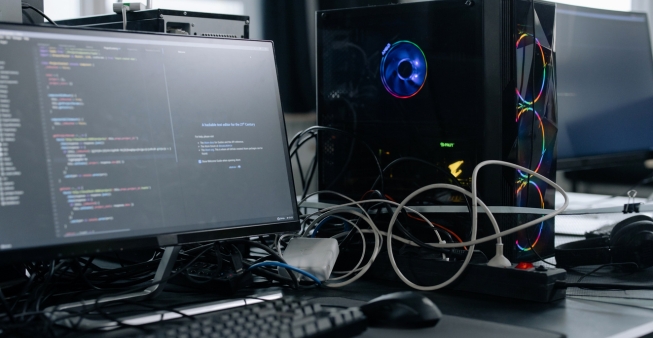As digital transformation accelerates, the demand for real-time data processing is reshaping how enterprises manage IT operations. According to the “Speed to Business Value” report, over 80% of companies surveyed experienced increased revenue, and 62% reported more efficient process rollouts after implementing real-time analytics. Processing data closer to its source—at the edge—can significantly reduce latency, enhance responsiveness, and improve user experiences across sectors such as retail, healthcare, manufacturing, and financial services.
Why Real-Time Matters at the Edge
Traditional IT models route data back to centralized servers or cloud platforms, which can introduce delays in processing and decision-making. For applications with instant feedback requirements, such as point-of-sale transactions, building security systems or real-time equipment monitoring, a lag can lead to issues ranging from security breaches to poor sales.
Edge computing addresses these limitations by decentralizing data processing, allowing systems to react faster, use bandwidth more efficiently and remain operational even when connectivity to the central server is interrupted.
Use Cases for Edge Computing Across Industries
Edge computing is not a one-size-fits-all solution, yet we see it everywhere. Global edge computing revenue is set to reach 350 billion by 2027. While edge computing growth is impressive, implementation depends heavily on the use case and industry needs. For example:
- IoT and Smart Buildings: Edge systems locally process data from sensors, security cameras and access controls, reducing response time and bandwidth usage.
- Retail POS Systems: Processing transactions at the edge enhances speed and reliability, particularly during peak hours or when internet connectivity is limited.
- End-User Computing: Laptops and tablets equipped to process data locally reduce reliance on central systems, boosting productivity and resilience.
- Audio Visual Solutions: Digital signage and conferencing systems benefit from reduced latency and improved synchronization when content is served locally.
- Edge Networking Infrastructure: Wi-Fi and LAN systems are configured for local data routing, enhancing performance and reducing external dependencies.
- EV Charging Stations: Localized control of power distribution and real-time payment processing ensures smoother user experiences and operational uptime.
- Starlink Deployments: In remote areas, satellite communication nodes installed at the edge eliminate the need for fiber backhaul, enabling real-time connectivity where it was previously unavailable.
Best Practices for Deploying Edge Infrastructure
Organizations looking to implement edge computing at scale should consider the following foundational elements:
- Network and Power Integration: Reliable edge operations depend on strong wireless, networking and power infrastructure. This includes redundancy planning and remote monitoring capabilities.
- Scalable Deployment Models: Centralized coordination enables the seamless rollout of thousands of devices across multiple locations, while maintaining quality and efficiency.
- Industry-Tailored Design: Edge strategies should reflect industry-specific requirements, whether HIPAA compliance in healthcare or PCI-DSS standards in retail.
- Structured Cabling and Device Wiring: A reliable physical infrastructure is key. Structured cabling ensures a consistent data flow, especially for connected devices such as sensors, displays and access control systems.
Supporting Real-Time Edge Performance
At Verinext, we understand that powering performance at the edge requires more than just deploying devices—it necessitates end-to-end coordination, industry expertise and scalable infrastructure.
That’s why we partner with ServicePoint to deliver real-time edge solutions with precision. Through centralized tools like the Central Command Center and Workforce Planning Engine, ServicePoint executes high-volume, multi-site deployments with speed and consistency—whether it’s structured cabling, wireless networks or edge device integration.
Verinext brings a strategic lens, designing edge architectures that align with your business goals, reduce latency, and support evolving demands across AI, IoT and data-driven operations.
Together, we ensure your edge environment is built to perform no matter what comes next.
Looking Ahead
Organizations that successfully implement edge computing are unlocking new capabilities. Real-time insights drive faster decisions, reduce system downtime and empower automation initiatives, including AI and machine learning related ones. This shift is already transforming customer service, supply chain logistics and energy optimization.
The rise of edge deployments makes building a scalable, resilient edge infrastructure a priority. Our proven track record ensures your edge computing infrastructure is ready to meet the current demands and future challenges. Contact us today to learn how Verinext can assist you.
Related Posts:
Driving Business Forward: 8 Key Ways Managed IT Services Give Businesses an Edge






